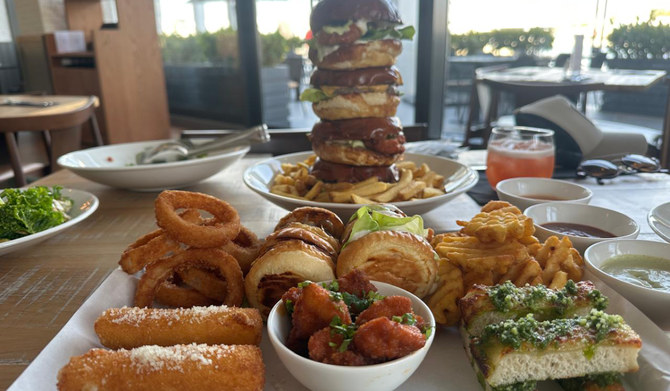Monitoring Desk
The semi-arid land in Gujarat, which separates India and Pakistan, used to be home to thriving farms. Despite erratic monsoons and scorching summers, farmers successfully cultivated crops here for decades. They grew millet, corn and cumin, along with other important crops.
But they didn’t know that the foundations of their centuries-old practice were dwindling.
The fields were kept fertile at the expense of the groundwater tables, which were slowly depleted through unfettered irrigation. By the early 2000s, the aquifers that used to sit at about 25m (82ft) underground had sunk to a depth of more than 300m (984ft).
“Digging borewells that deep was not an option, it would have been too expensive,” says Trupti Jain, founder of the social enterprise Naireeta Services. Drought driven by water mismanagement and climate change rendered the land infertile for most of the year, she says, “so the farmers started to migrate to find other work, either as labourers on someone else’s land, or construction workers in cities”.
Water is declining around the world. Today, fresh water reserves are shared among more people than ever before, each consuming an increasing amount of water in their daily lives. Climate change is melting glaciers and intensive farming is depleting underground resources in some of the most populated areas of the world.
Water is not considered a major commodity – like oil or gold – but is one of the most valuable resources that sustain life on earth, says Marco Sanchez, deputy director of the agricultural development economics division within the Food and Agriculture Organization of the United Nations (FAO). “Population growth, income growth and urbanisation are all increasing our consumption,” he says. “And there is also dietary change. For example, if people have greater incomes, they are able to eat more meat, and that has a [greater] water footprint.”
The share of water accessible to each person has declined by more than 20% on average over the last two decades.

Water access underpins a host of social issues too, Sanchez says. It is essential to maintaining food security, public health and gender equality, as women are often responsible in many households for sourcing it.
Ultimately, water availability is a matter of equality. Poor nations are already paying a hefty price for its scarcity, particularly in agriculture, but the problem is now creeping up on rich countries too. According to the 2020 edition of the FAO’s State of Food and Agriculture report, the share of water accessible to each person has declined by more than 20% on average over the last two decades. One in six people on the planet, or about 1.2 billion, live in agrarian regions where water is lacking at times or is chronically scarce, affecting their ability to feed their families and sell produce.
Some regions are more vulnerable than others. Out of the total number of people exposed to water insecurity, over a billion live in Asia, the FAO says in its report. India is one of the most water-stressed countries in Asia and the world, and according to 2012 data from the World Bank, it’s also the world’s largest user of groundwater.
Jain and her partner Biplab Ketan Paul came up with an innovation that over a decade has helped farmers across the whole of India and beyond to tackle groundwater scarcity and mitigate climate change driven drought. Their innovation, Bhungroo, which means “big straw”, comprises one big pipe that goes underground, connected to two smaller pipes. When monsoon rains clog the fields, the small pipes drain the water so it is stored underground instead of quickly washing off the surface. In Gujarat, the team worked out the optimal depth to plant the pipes by talking to local women whose families used to manually dig wells 20-25m deep, reaching a layer where soil is porous and retains water easily. During the summer, the second pipe taps into this earth layer and mechanically pushes the water back to the surface, so the fields are never parched. The idea has been so successful in Gujarat that Bhungroo systems are now found in nine other Indian states, as well as Vietnam, Ghana, Rwanda and Bangladesh.
In the video below, James Wong investigates how Indian farmers are finding other unique ways to solve their groundwater shortages.

Better water balance in the soil, Jain says, also means keeping its salinity at bay in areas where seawater infiltrates the fields. In Bangladesh, the salinity issue is particularly severe. More than 35 million people live along the 441 miles of Bangladesh’s coastal belt, which covers a third of the country. As sea levels rise due to climate change and more freshwater is pumped out from natural reservoirs, saltwater contaminates the soil. Salinity reduces the reserves of potable water and is toxic for crops.
Plants absorb water from low-salinity environments, such as the soil, and store it in the root cells, which have a higher salt concentration through a process called osmosis. When the soil contains a lot of salt, this process slows down and the plants struggle to take up water, which in turn leads to stunted growth.
Agriculture contributes over a fifth of Bangladesh’s economy and a 2014 study, one of the latest available on the issue, found that over the past 35 years the infiltration of saltwater has increased by 26%.
The problem of salinity also affects shrimp farming, a thriving industry that has tripled in size over the past four decades and helped Bangladeshi mitigate the impacts of dwindling fish catch from the sea. Scientists have been looking for ways to help farmers deal with worsening water quality while improving the sustainability of their farms, which can weigh heavily on the natural water systems they rely on.
Mohammad Salah Uddin, assistant professor of computer science and engineering at East West University in Bangladesh’s capital Dhaka, figured that the first step should be to help farmers keep track of what is in the water at any given time. “We started by monitoring the ecosystem and identifying the type of water quality suitable for freshwater shrimp,” he says. “We realised that the two key qualities to watch were water temperature and salinity levels, so we developed a tool to monitor those, as well as other parameters.”
With his team, Salah Uddin built a compact device that automates water quality monitoring, uploading data in real time into the cloud. The box, which measures just 4cm by 7.5cm (1.6 inches by 3 inches), packs a number of sensors to measure factors such as water level, clarity, pH, dissolved oxygen and salinity.
The researchers have written an algorithm that uses the sensors to estimate the levels of each measure of water quality and if one of them goes off kilter, it sends a warning to the user’s mobile phone. Salah Uddin says that although the prototype was not designed for commercialisation, the team is now hoping the device will become mainstream. The developers are liaising with the government to distribute it to the farmers and help them with the upfront cost of $90 (£66), plus the cost of the cloud service of about $10 (£7.30) a month.
Saltwater doesn’t just pollute Bangladesh’s rivers and the ponds where shrimps are farmed, it also threatens staple crops such as rice. Scientists estimate that by the middle of the 21st Century, climate change, combined with industrial development along the coast, is likely to severely alter soil and river salinity during the dry season. A 2017 study from the World Bank found that local high-yielding varieties such as boro rice may decline by up to 15.6% before 2050 across nine coastal areas.
“When it comes to agriculture, any little salt is a problem,” says Chinmayee Subban, a material scientist with the Pacific Northwest National Laboratory who specialises in water and energy issues. “Soil amendments and fertilisers increase the salinity of local water supply.” And this is happening in the US where she works but also in South Asia, she says.
Salinity is a problem for farmers in the UK, too. Low-lying farmland in Lincolnshire suffers from saltwater contamination from the North Sea. James Wong spoke to one research group who are proving saltwater can be useful. In the video below he tries their “saltwater chips” for himself.

One solution to groundwater salinity is to treat it and recover some of the fertiliser. This can then be put back onto the fields, offsetting some of the costs of the water treatment.
“But climate variability makes farmers very hesitant to invest in technology,” she says. “They may spend a lot of money this year, get a loan to buy a new technology and next year it may just be pouring down with rain.” This would mean the expensive water recycling system would just sit unused. “They can’t really justify it,” Subban says.
Desalination is already very expensive when it comes to drinking water, so it’s really hard to make it a viable alternative for agricultural irrigation, which is one of the “most subsidised waters”, says Subban.
In countries like India, which are already water-scarce, a more efficient irrigation system may make the difference between food security and scarcity. Agriculture is the single largest user of freshwater, says Malancha Chakrabarty, a fellow with the Climate Change and Development Initiative of the think tank Observer Research Foundation in Delhi.
As well as dwindling groundwater reserves, India is also the world’s second-largest producer of rice, a water-intensive crop which grows mostly in flooded fields. Submerging the seedlings has the double advantage of protecting them from weeds and regulating their temperature, but it also uses up a lot of water and produces methane, a potent greenhouse gas, through the formation of bacteria in the mud.
In order to address the situation, Chakrabarty says, “we’ll have to make some dramatic changes in the way we produce our crops and the kind of irrigation methods we choose, but also rethink the type of crops we grow”. For example, large parts of northwestern India are not suitable for rice and could be shifted to other crops that require less water.
“When we look at productivity, most of the time we look at land productivity, how much yield can be produced per hectare of land,” Chakrabarty says. “But maybe we need to look at how much yield can be produced by how many units of water.” Rethinking the way we measure productivity, she says, would help minimise water usage.

While rice is traditionally a water-intensive crop, agronomists around the world are working on new ways to adapt its cultivation to a water-scarce world.
“When I first heard about the plan to implement drip irrigation for our rice, I thought it was a crazy idea,” says Michele Conte, an agronomist with La Fagiana, one of Italy’s main rice producers based in the Venice area, in the northeast of Italy. “But since starting with the new method we produced the same quantity of rice without compromising on quality.”
Drip irrigation takes the water directly to the root of the crops, reducing leaks and evaporation which waste a lot of water before it reaches the plants. The traditional method requires 15,000 cubic metres of water per hectare of cultivated rice, “and if we want to increase production, we just can’t carry on this way”, Conte says. Some studies have indicated drip irrigation can halve the seasonal water requirement of rice in Italy, while for other crops it can cut water use by up to 90% in some cases.
La Fagiana’s fields lie below the sea level, so water provision has never been a problem before, “but over the past three years we’ve experienced water scarcity at the beginning of spring”, says Conte. A thinner than usual snow cover during winter had not replenished the local rivers, he explains, and without sufficient pressure from the streams, seawater from the nearby coast started making its way into the freshwater reserves and soils.
La Fagiana teamed up with Netafim, a world-leading micro-irrigation company, to grow its first four hectares of drip-irrigated rice. While the systems are quite expensive and would not be cost effective to produce animal fodder and other low-cost crops, M Saravanakumar, a senior leader at Netafim, says drip irrigation can be implemented in developing countries with the support of local governments that understand its potential and are willing to shoulder the upfront costs.
The farmers, he says, don’t just save water, but also save on labour cost. “They also reduce electricity consumption to two and a half hours per acre [about 4000 sq metres], while flood irrigation requires five to six hours.”
Tomorrow’s agriculture will need to grow more with less, whether it’s through high-tech solutions like drip irrigation or simple innovations such as Jain’s Bhungroo. And in a water-scarce world, smarter agriculture is about more than just food – it can help build a more sustainable economy for all.
During a visit to the Patan district in Gujarat, a group of women gathered around Jain. One came forward with tears in her eyes, Jain recalls. “You have returned my son to me,” the woman said. “He had to move away in search of work but now he’s back, because we can grow new crops twice a year.”
Courtesy: BBC








